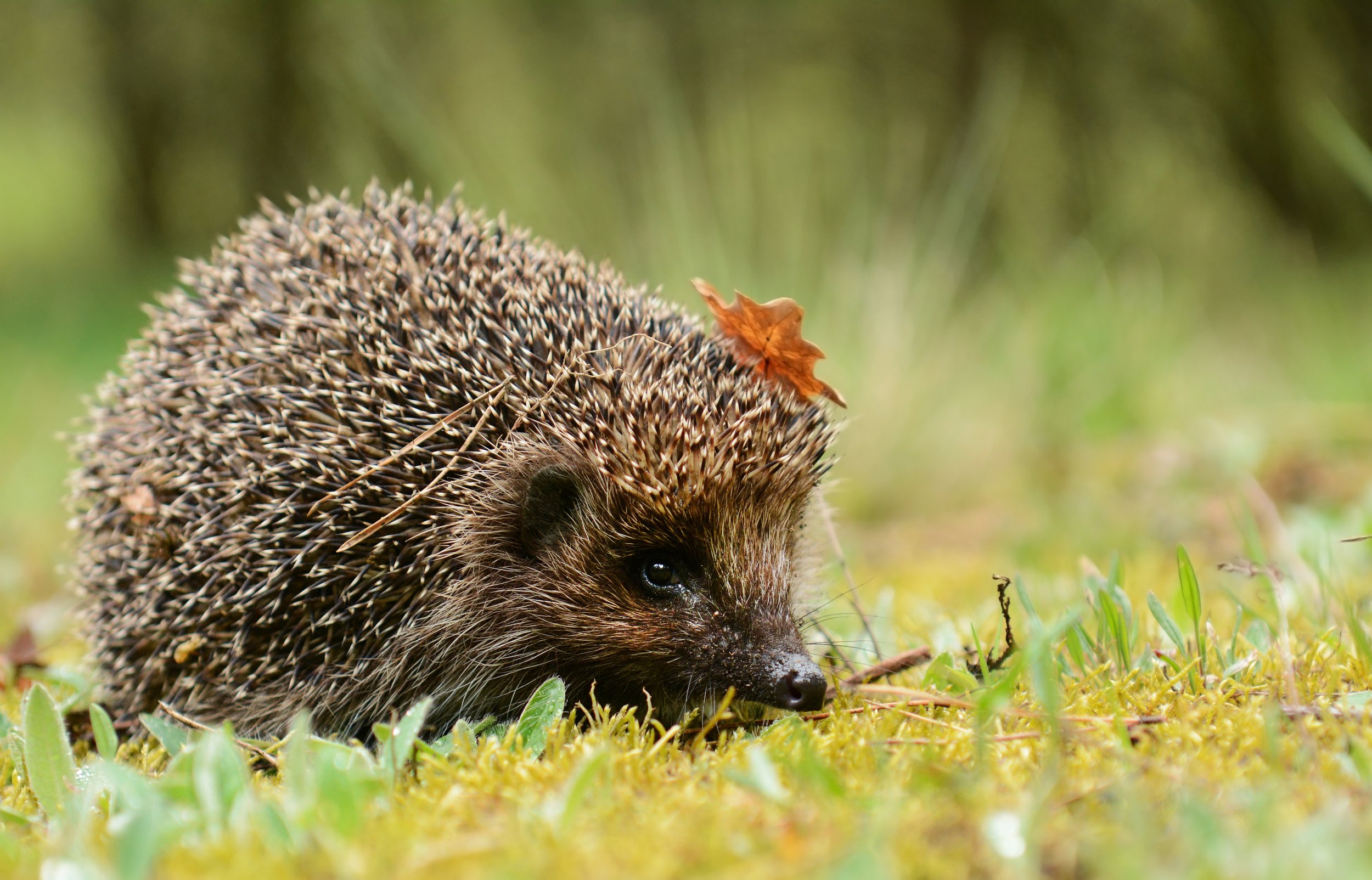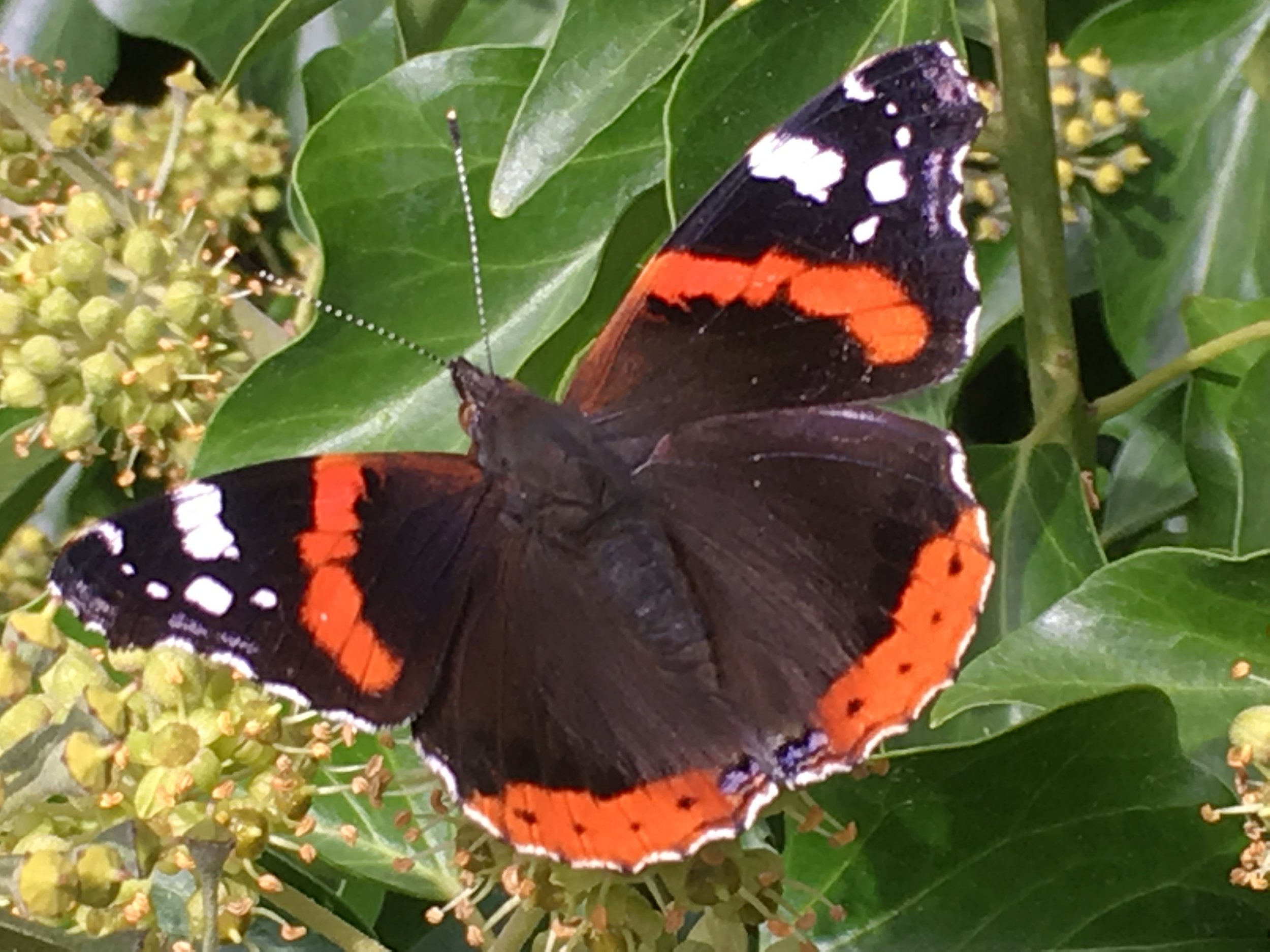November Newsletter
For wildlife in your garden this time of year is all about preparing for the long winter ahead. Animals have many different strategies for surviving the winter months, such as growing thicker coats, hibernating, and migrating. I love seeing Robins at Chalkhill, like this fella who happily posed for me a few days ago. I was surprised to learn that in the UK some Robins migrate further south for the winter, and our resident birds are also joined by other Robins from further north. Like many birds in winter Robins keep warm by fluffing up their feathers to trap air and provide insulation like many layers of clothing.
Robin at Chalkhill
Hibernation
Only 3 British mammals: dormice, bats and hedgehogs truly hibernate. This interesting article by the Wildlife Trust explains how other animals including reptiles, amphibians, and many insects use slightly different forms of inactivity such as torpor, brumation and diapause to see them through until spring. Warmer winters due to climate change means that some species behaviours are changing, often adversely affecting their lifecycles.
Hedgehog
Red Admiral butterflies
Until very recently this year I was still seeing Red Admiral butterflies at Chalkhill. That’s not surprising as Butterfly Conservation recorded record numbers of them in 2023 in the UK. Traditionally Red Admirals have migrated to the UK to breed in spring and then flown back to North Africa for warmth in the winter. Warmer winters here mean that more Red Admirals are active later into the year, nectaring on Ivy flowers and rotten windfall fruit, then spending winter in the UK. They do this by sheltering in places such as tree hollows, log piles, and cool buildings, ready to emerge early next spring.
Red Admiral nectarine on Ivy flowers at Chalkhill
Bird nest boxes
In March ‘22 we installed a Barn Owl box at Chalkhiil. We’d seen a Barn Owl flying over the field next to us once and the end of the garden and neighbouring field appear to be the correct habitat for them. No sign since then of an owl. A couple of weeks ago while a tree surgeon was here, I asked them to cut a couple of branches blocking the line of sight from the field, thinking it would make the box more inviting. We were all surprised when a Barn Owl flew out of the box and objected to the noise! Fingers crossed we didn’t disturb the owl too much and they’ll use the box to nest next spring.
Early winter is the perfect time to install bird nest boxes of any sort in your garden, allowing birds plenty of time to check them out before using them next spring.
Installing the Barn Owl box at Chalkhill
A Rewilding Gardeners Diary
This week I’m focusing on leaf mould. Leaf mould is decaying leaves and it makes a great (free) soil conditioner. I leave fallen leaves where I can and allow piles to gather in corners around the garden as shelter and homes for wildlife. Where the leave do need to be cleared, for example, from paths, the meadow and lawn, I collect it into cages made from chicken wire. I’ve got a few dotted about, one is square, supported in the corners by posts and others are cylinders. Another way is to use reusable bin bags such as old builders' material bags. Fill these with damp leaves, tie the top and pierce the bag a few times. One year old Leaf mould is one of the best mulches for soil, it will protect bare soil from winter rain, in summer it keeps soil moist and suppress weeds. Even better it will provide food for the soil’s micro life and worms.
One way of collecting leaves from a lawn is with your lawnmower, blades high, as this will shred the leaves and collect them in a mix with grass trimmings. I tend to pop this type into the compost as it's the perfect combination of green and brown matter.
In the next week or so I’m also planning to spread some of my homemade compost onto my no dig beds to feed the soil (Charles Dowding recommends 2-3cm) and finally get the Garlic bulbs planted before it’s too late.
Photos: Hawthorn berries and Rose hips
The value of hedges
A family of foxes live in the field next to Chalkhill and often visit the garden. Last week I was intrigued to see a fox sitting in the hedge at the back, perched quite near the top. I realised they were nibbling on the last of the season’s blackberries. If you follow me on Instagram you may have seen the video (the photo quality was too poor to include here). It was a reminder how important the resources such as berries, nuts and hips in hedges are to wildlife. If you have hedges with fruit on in your garden try and leave any necessary pruning until late winter so that birds and other wildlife can eat the fruit first.
Snail Art
A photo I did manage to snap at Chalkhill recently is this very small Garden Snail drawing a picture in the dew on a paving stone. Slugs and snails are much more visible and active in wet weather, so I’ve been noticing a lot of them recently. Rather than worrying about plant damage I’m pleased they are providing plentiful food for the birds such as thrushes, blackbirds, robins, as well as corvids and starlings. Slugs and snails are also a good source of food for hedgehogs as they prepare to hibernate.
And finally..
If you'd like to find out more about Chalkhill Rewilding’s services take a look at my website, email for more information or WhatsApp me on 07957 170015. And please feel free to forward my details to any of your friends and neighbours you think may be interested in making their gardens wilder.
Click here to subscribe to this newsletter.
Thanks for reading!
Helen
Photo: Autumn leaves at Chalkhill








